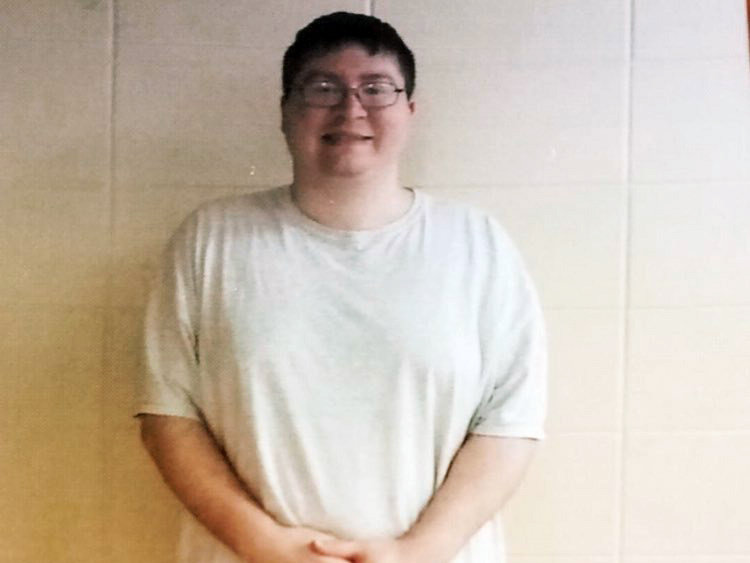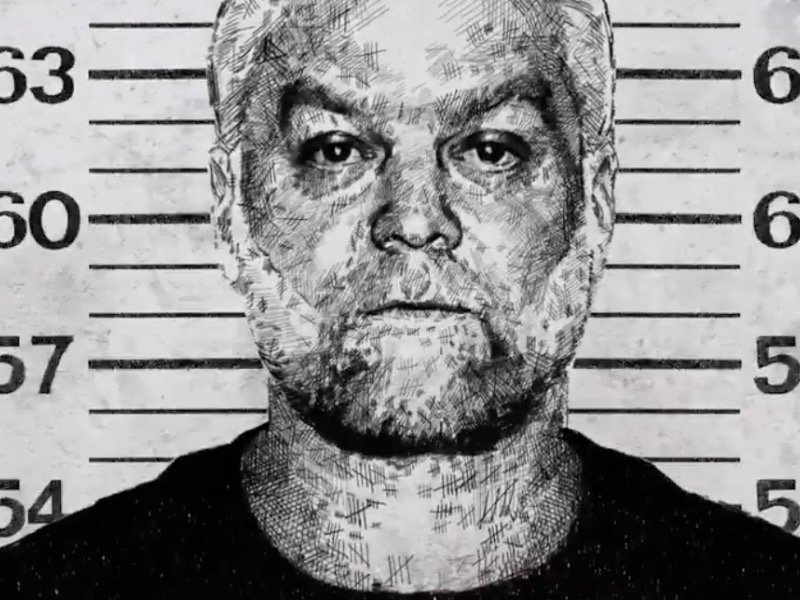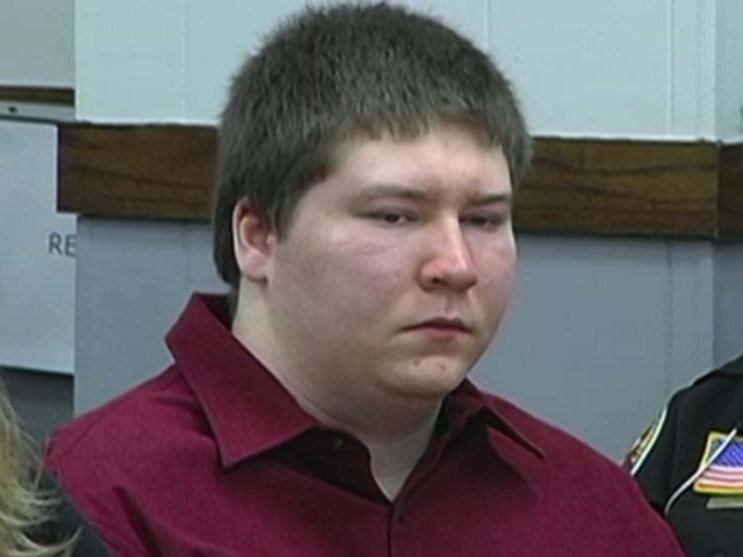MANITOWOC – Was Steven Avery’s sweat found on Teresa Halbach’s RAV4 vehicle and key? It’s complicated. They found Avery’s DNA. But what kind? Maybe, the defense said, the DNA came from his toothbrush. Or mouth swabs. Maybe, the state’s DNA analyst said, it was blood. Or not.
The blood spatter evidence is complicated, too; a state expert thought Avery’s blood came from active bleeding.
The "Avery sweat" angle is a case study in how all sides have, at times, boiled down the very complex CSI forensics in the case, so OnMilwaukee decided to take a closer look at the crime scene investigation. The jury, of course, saw a fuller picture.
In the wake of the sturm and drang over the "Making a Murderer" Netflix documentary, then-prosecutor Ken Kratz told the media that Avery’s sweat was found under Halbach’s vehicle hood and on her vehicle key, which was belatedly found in Avery’s bedroom by James Lenk, the Manitowoc County Sheriff’s detective the defense has accused of planting stuff – which he denies.
Defense attorney Dean Strang then countered in the media that the sweat angle was not proven. He declined a request, through a PR spokeswoman, to discuss the specifics of the DNA. In court, the defense floated at least three theories to explain why Avery’s "touch DNA" might be on the infamous key and hood latch – including that a cop smeared it on the key using Avery’s toothbrush.
As for the documentary? The documentary pretty much ignored the "touch DNA" debate, making the audience think that any planting came from an old Avery blood vial, a far simpler narrative. Touch DNA is non-blood DNA that comes from a person’s skin cells sloughing off, sometimes with sweat contributing to its presence. It was previously used to exonerate Jon Benet Ramsey’s parents.
What do the court records show? OnMilwaukee decided to take a look at the massive files.
They show that it’s true the sweat angle was not conclusively proven, according to the DNA analyst’s testimony. Sherry Culhane, the DNA analyst who testified about touch DNA, said she could not conclusively rule out the possibility that it was residual blood in very small amounts because she didn’t test the hood latch or key swabs for blood, in part because the samples were so small and because she did not visibly see blood.
Defense attorney Jerome Buting asked at one point, "So you can’t rule out the source of that DNA being a blood drop or a blood smudge of some sort can you?"
Culhane responded, "No, I can’t."
Also not disproved – and not thoroughly explored by the documentary – was the possibility that Avery’s DNA on the hood latch and key came from his skin cells/sweat, which is known as "touch DNA" or non-blood DNA. This was debated extensively in court and remained a live possibility at the end because Culhane also testified that she did not see any visible blood on the key or hood latch as she did with other samples inside the Halbach car. She said that’s when she moved on to looking for touch DNA on the items. She then found Avery’s DNA. It should be noted that in one of his controversial, unrepresented confessions, Avery’s teenage nephew Brendan Dassey said he saw Avery lift the hood after an interrogator asked him about it. He also said that he saw Avery put the victim’s car key in Avery’s bedroom.
In closing argument, the defense attorney said, "The source of Mr. Avery’s DNA in his house is plentiful. Toothbrushes, razors, all kinds of personal items in one’s home. If Mr. Lenk and Mr. (Andrew) Colborn wanted to put Mr. Avery’s DNA on that key, that was easily available."
Why this all matters: If some of the Avery DNA was "touch DNA," the frame job would have to be more complicated. Now you’ve got cops obtaining Avery’s skin cells/sweat, not just his blood – not to mention a killer who is someone else, to buy the defense theory, planting Halbach’s burnt bones into the bonfire that Avery coincidentally had that night, a double frame.
But how could cops get Avery’s touch DNA? Maybe, floated defense attorney Buting, the cops rubbed Avery’s toothbrush on the key. He also floated the idea that other household items could have contained Avery’s non-blood DNA.
Buting: "If one was to rub a toothbrush up against a key, that might also transfer some low level amount of DNA to the key right?"
Culhane: "That would be possible, however in my experience toothbrushes are not a real good source of DNA."
Buting: "There are many ways, many personal items that someone might rub against a key that might also shed and deposit a lot amount of DNA such as you found on this key?"
Culhane: "Yes, it's possible."
The defense also solicited testimony that showed that buccal swabs containing Avery’s DNA from his mouth from the earlier wrongful conviction case had been sent back in 2003 to the Manitowoc County Sheriff’s Department by the state Crime Lab.
They were kept there in a locked communal evidence room.
At one point in court, Buting told the judge, "This witness (Culhane) has testified that there’s DNA found on items that she said she didn’t see any blood, which could have come from buccal swabs. So she’s already testified to that, so it's in play, whether or not the Manitowoc County Sheriff’s Department had any of Mr. Avery’s DNA in another form, which they did."
Prosecutor Norm Gahn inquired, "Are we saying that the planting did not come from the blood, but the planting now came from the buccal swabs of Steven Avery?"
Buting responded, "Judge, this is not new. We have alleged – look, they brought up, on direct, that there was DNA that she discovered that she said did not appear to come from blood. So it had to come from another source. This is another source, that according to this record at least, was sent back to the Manitowoc County Sheriff’s Department ..."
At another point, Buting said, "Judge, I don’t mean to cut counsel off, but it is in response to testimony they elicited here, that some of it, some of the DNA apparently did not come from blood. Now we have a right to respond to that, and this is a response. It is not an explanation for the blood in the RAV4. Maybe an explanation for some of the other."
The judge decided to allow the evidence that the packet of buccal swabs was sent to the Sheriff’s Department, saying, "My recollection is that the previous contested hearing involved the blood vial … I believe the evidence first came up at that point that there was some DNA evidence of Mr. Avery apparently not from blood that was found, if I recall correctly on the Toyota key and on the hood latch … I think it is relevant. I will allow the defense to pursue this matter."
However, when the evidence packet was brought into court, Culhane testified the seal was not broken on it.
The defense additionally argued that state blood spatter expert Nick Stahlke might have transferred Avery’s DNA from the Halbach vehicle to the hood latch.
Stahlke testified that he lifted the hood to see why the car wouldn’t start and saw the battery had been disconnected. However, Stahlke testified he was wearing surgical gloves to protect any evidence. The defense argued he should have changed them and could have transferred residual blood from the vehicle to the hood, the court transcripts show.
Of course, that wouldn’t explain the possible touch DNA on the key.
Other interesting CSI arguments that the documentary didn’t get into much or at all, according to the court transcripts, include:
The blood spatter expert thought Avery’s blood came from an active bleeder
Recall that, in addition to the possible touch DNA under the hood latch and on the key, Avery’s blood was found in six places inside Halbach’s car. The DNA analyst could visibly see these stains before testing.
Stahlke’s testimony was interesting because he also testified that the Avery blood inside the Halbach vehicle came from an "active" bleeder, not old, planted blood. He said he came to this conclusion after analyzing blood patterns.
Avery had a cut on his right hand at the time of the murder. Stahlke also testified at one point that he found a passive drop of Avery’s blood in the vehicle, meaning blood had dripped off the person who left it. The defense asked whether it was possible that someone could have dripped the blood with an eye dropper. Stahlke said that was possible.
"The pattern on the dashboard – is this pattern consistent with someone who could be actively bleeding on their right hand?" asked Gahn.
Stahlke responded, "Yes, it is consistent with that."
As to the passive drop on the passenger side door frame? "Is this type of drop consistent with being left by a person who is actively bleeding?"
Stahlke responded, "Yes, it is."
Avery’s "fresh" blood was found in a Grand Am, too
Stahlke also said that Avery’s blood was found in Avery’s Grand Am on the property. Stahlke testified this blood on the gear shaft appeared fresh. He also testified that he concluded this blood came from an active bleeder, too.
That, of course, begs the question: If the cops planted Avery’s blood in Halbach’s car, why would they also plant it in Avery’s own Grand Am? What would that get them?
Or you have the extraordinary coincidence of Avery having an actively bleeding cut in one car he owned, while cops were allegedly planting his old blood in another car owned by the victim in a way that fooled a blood spatter expert into thinking it was also from an active cut.
Culhane helped convict and then exonerate Avery
You’re getting the picture. The CSI in the case was very complex. Culhane’s background is too. Culhane was featured mostly in the documentary for admitting she contaminated a belatedly found bullet unearthed in Avery’s garage with her own DNA (the bullet had Halbach’s DNA, she testified). She is a more complex figure than was shown; her testimony on hair evidence helped lead to Avery’s wrongful conviction.
However, she also performed analysis that led to his exoneration.
Lenk and Colborn didn’t work for the Sheriff’s Department when Avery was wrongfully convicted
Also, in the court files: the information that Lenk was not even on the Sheriff’s Department yet when Avery was wrongfully convicted in 1985. This fact was confirmed by the Sheriff Robert Hermann, who said Lenk was hired in 1988.
Andrew Colborn, the other defense accused cop, wasn’t on the department then, either. Hermann said he was hired in 1992. Both were deposed in Avery’s civil suit, though, shortly before the murder because of a later call that indicated someone else might have done a sexual assault.
Culhane testified about why the Halbach key might not have had Halbach’s DNA on it
The key had Avery’s DNA on it. It did not have Halbach’s DNA on it. Internet theorists have argued this would be impossible. It was Halbach’s key, so where was her DNA?
However, in court, the defense asked Culhane about studies that show "that the last person who touches an item may leave the major portion of DNA that’s left on there."
Buting asked, "There’s still a mixture and a minor contributor as well right?"
Culhane responded, "No, I would disagree with that. In some cases, yes, it’s very difficult. There’s no way to really predict that. If you have someone who's a good shedder and sheds a lot of DNA when they touch something, a lot of studies show that is going to be – the last person is going to be the DNA you pick up. If you don’t shed a lot of DNA, then you may not find anything at all."
Why weren’t Avery’s fingerprints found in the Halbach car if he was actively bleeding?
Stahlke said it was possible he was wearing gloves but still bled in the car.
"I have no expectation to see fingerprints from somebody that is just actively bleeding," he testified. "I don’t know that I have ever seen been to a scene where there’s been active bleeding or passive drops in the same scene, seeing bloody foot – bloody fingerprints."
He said it’s possible Avery had gloves on but "if he is bleeding profusely, there is a possibility that the glove has a hole in it or a cut in it, and they are bleeding through the glove."
There was an unexplained fingerprint on the Halbach car
Michael Riddle, a fingerprint examiner with the Wisconsin State Crime Lab, testified there was a fingerprint found on the hood of Halbach’s car that did not match Steven Avery. The defense asked if he’d compared it to Scott Tadych, the then boyfriend of Brendan Dassey’s mother. The state said it was irrelevant, and the court sustained the objection.
However, Riddle said that he had compared the prints to those of Avery’s dad, his two brothers, his mother, Avery himself, three of the Dassey brothers, Barb Janda and Scott Bloedorn, Halbach’s roommate. None of those people matched the mysterious fingerprint. In closing argument, the defense pointed the finger mostly at Bobby Dassey and Scott Tadych.
Yes, it’s complicated.
Jessica McBride spent a decade as an investigative, crime, and general assignment reporter for the Milwaukee Journal Sentinel and is a former City Hall reporter/current columnist for the Waukesha Freeman.
She is the recipient of national and state journalism awards in topics that include short feature writing, investigative journalism, spot news reporting, magazine writing, blogging, web journalism, column writing, and background/interpretive reporting. McBride, a senior journalism lecturer at the University of Wisconsin-Milwaukee, has taught journalism courses since 2000.
Her journalistic and opinion work has also appeared in broadcast, newspaper, magazine, and online formats, including Patch.com, Milwaukee Magazine, Wisconsin Public Radio, El Conquistador Latino newspaper, Investigation Discovery Channel, History Channel, WMCS 1290 AM, WTMJ 620 AM, and Wispolitics.com. She is the recipient of the 2008 UWM Alumni Foundation teaching excellence award for academic staff for her work in media diversity and innovative media formats and is the co-founder of Media Milwaukee.com, the UWM journalism department's award-winning online news site. McBride comes from a long-time Milwaukee journalism family. Her grandparents, Raymond and Marian McBride, were reporters for the Milwaukee Journal and Milwaukee Sentinel.
Her opinions reflect her own not the institution where she works.







